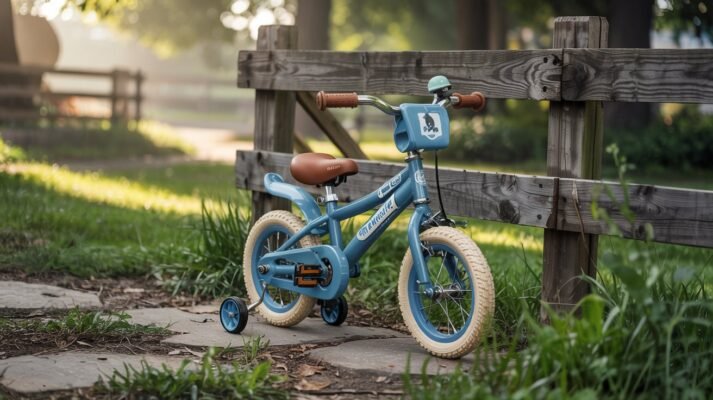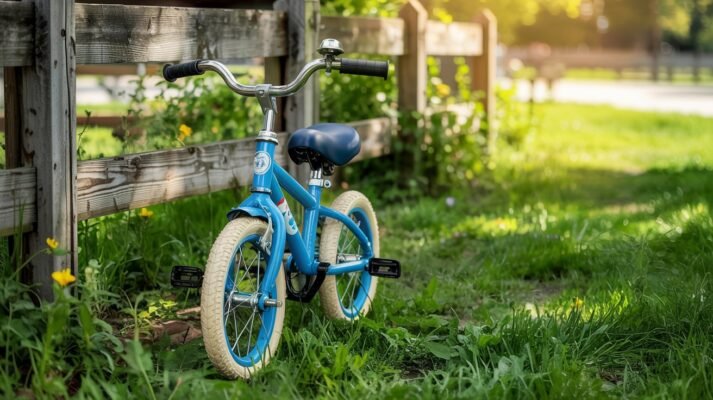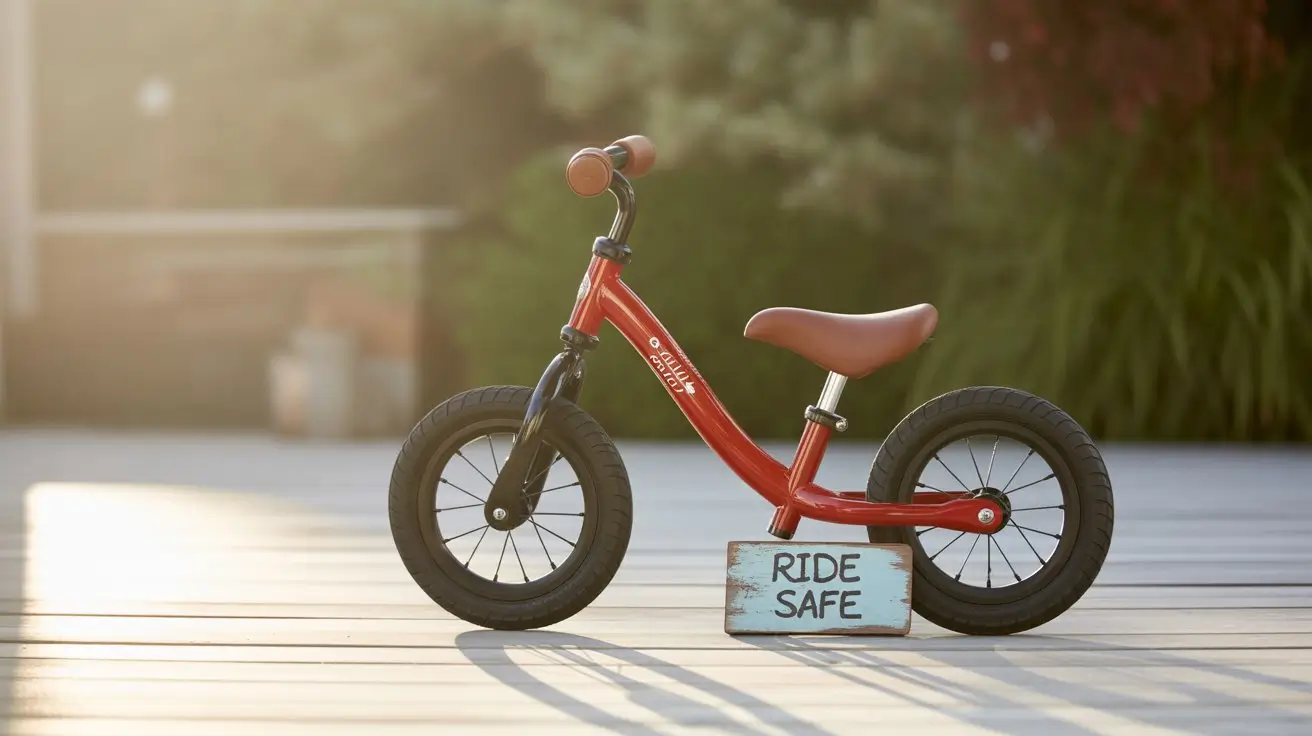The Complete Toddler Bike Guide: Expert Answers for Safe Riding in 2025
Choosing the right toddler bike can feel overwhelming with countless options flooding the market. However, the decision becomes straightforward when you understand the key factors that actually matter for your child's safety and development.
This comprehensive guide answers the most common questions parents ask when selecting their toddler's first bike. From balance bike benefits to proper helmet fitting, we'll cut through the marketing fluff and focus on what truly makes a difference.
What Age Should My Toddler Start Riding a Bike?
Most children are ready to start with a balance bike between 18 months and 2 years old. At this age, toddlers have developed sufficient balance and coordination to safely straddle a bike and push themselves forward with their feet.
The key indicator isn't just age, it's your child's ability to walk confidently and their inseam measurement. Their feet should touch the ground flat when sitting on the bike seat. As one pediatric physical therapist notes, “Starting too early can actually hinder development if the child can't maintain proper posture.”
Should I Choose a Balance Bike or Training Wheels for My Toddler?

Balance bikes consistently outperform training wheels for developing essential cycling skills. Training wheels create a false sense of security and don't teach actual balance—the most critical skill for independent riding.
Balance bikes teach children to lean into turns and develop natural steering instincts. Meanwhile, training wheels can actually delay the learning process by up to 18 months, according to recent cycling development studies.
| Feature | Balance Bike | Training Wheels |
|---|---|---|
| Balance Development | ✓ Natural progression | ✗ Creates dependency |
| Confidence Building | ✓ Self-paced learning | ✗ False security |
| Transition to Pedaling | ✓ Usually within 3-6 months | ✗ Often requires relearning |
| Age Range | 18 months – 5 years | 3-6 years |
| Terrain Versatility | ✓ Works on various surfaces | ✗ Limited to smooth paths |
What Size Bike Does My Toddler Need?
Bike sizing should always be based on your child's inseam measurement, not their age. Measure from the floor to their crotch while they're wearing shoes they'll bike in.
For balance bikes, subtract 1-2 inches from their inseam to find the minimum seat height. This ensures they can place both feet flat on the ground with a slight knee bend. Most toddlers need 12-14 inch wheel sizes initially.
Sizing Guidelines by Inseam:
- 12-14 inches: 12″ wheel balance bikes
- 15-17 inches: 14″ wheel bikes
- 18-20 inches: 16″ wheel bikes
Remember, it's better to size slightly smaller than too large. A bike that's too big becomes a safety hazard and confidence killer.
How Important Is a Helmet for Toddler Bike Riding?
Helmet use is absolutely non-negotiable for toddler cycling. Bike helmets reduce the risk of head injury by at least 45%, brain injury by 33%, facial injury by 27% and fatal injury by 29%.
The helmet should sit level on your child's head, with the front edge about one finger width above their eyebrows. Most of these helmets are CPSC certified for ages 1+, offering extra protection along the back of the head.
Essential Helmet Features:
- CPSC certification (Consumer Product Safety Commission)
- Proper ventilation for comfort during active play
- Adjustable retention system for growing heads
- Bright colors for visibility
Honestly, finding a helmet that fits properly can be trickier than choosing the bike itself. However, this investment in safety pays dividends throughout their cycling journey.
What Safety Features Should I Look for in a Toddler Bike?
Beyond the obvious helmet requirement, several bike features significantly impact toddler safety. Look for bikes with footrests where children can place their feet while gliding—this prevents dragging and potential falls.
Hand brakes aren't necessary for most toddlers on balance bikes, as foot braking comes naturally. However, if choosing a pedal bike, ensure the brake levers are sized for small hands and positioned within easy reach.
Must-Have Safety Features:
- Steering limitation to prevent oversteering
- Rounded edges on all frame components
- Non-slip handgrips for secure holding
- Puncture-resistant tires to avoid sudden stops
- Quick-release mechanisms only where absolutely necessary
How Do I Teach My Toddler to Ride Safely?
Start in a controlled environment like an empty parking lot or grass field. Grass provides natural speed control and softer landings during the learning process.
Encourage your toddler to walk the bike first, then progress to sitting and scooting with both feet. The magic happens when they naturally lift their feet for longer periods while gliding.
Progressive Learning Steps:
- Walking with bike (1-2 sessions)
- Sitting and scooting (3-5 sessions)
- Gliding with feet up (varies by child)
- Steering while gliding (confidence building)
- Longer glides and turning (mastery phase)
Never push the timeline—every child develops at their own pace. Furthermore, making it fun rather than instructional creates positive associations with cycling.
When Should My Toddler Transition to a Pedal Bike?
The transition typically happens when your child can glide for 10-15 feet consistently while steering confidently. This usually occurs between ages 3-5, depending when they started with balance bikes.
Look for signs like requesting “a real bike like big kids ride” or attempting to pedal while on their balance bike. These indicate readiness for the next challenge.
Transition Indicators:
- Confident gliding for extended distances
- Comfortable steering around obstacles
- Natural leaning into turns
- Expressed interest in pedaling
- Physical size appropriate for next bike size
The beauty of balance bike training is that most children can ride a pedal bike within one or two practice sessions. They've already mastered the hardest part—balance.
What Are Common Toddler Bike Safety Mistakes to Avoid?

The biggest mistake parents make is buying a bike their child will “grow into.” This approach compromises safety and delays skill development significantly.
Another common error involves improper helmet fitting. The front edge of the helmet should sit an inch above the eyebrows, covering the forehead well. Too loose, and it won't protect during impact; too tight, and your child won't wear it consistently.
Top Safety Mistakes:
- Oversized bikes that prevent proper control
- Inadequate supervision during initial learning
- Poor helmet maintenance (replace every 3-5 years)
- Ignoring terrain limitations for skill level
- Skipping pre-ride safety checks
Additionally, many parents underestimate the importance of regular maintenance. Check tire pressure monthly and inspect for loose bolts or worn components.
How Do I Maintain My Toddler's Bike for Maximum Safety?
Regular maintenance extends bike life and prevents safety issues. Perform weekly visual inspections and monthly detailed checks of all components.
Keep moving parts lubricated and ensure proper tire inflation. Most toddler bikes require minimal maintenance, but neglect can create dangerous situations.
Monthly Maintenance Checklist:
- Tire pressure (check against sidewall specifications)
- Brake function (if applicable)
- Handlebar tightness (no wiggling)
- Seat security (proper height maintained)
- Frame inspection (cracks or damage)
Store the bike in a dry location to prevent rust and component degradation. Weather protection significantly extends the bike's usable life.
Choosing the Right Toddler Bike: Final Recommendations
The best toddler bike balances safety, durability, and proper sizing for your specific child. Start with a quality balance bike around 18-24 months, then transition to a pedal bike when they demonstrate readiness.
Invest in a well-fitting helmet from day one—this habit will serve them throughout their cycling life. Remember, the goal isn't just learning to ride but developing a lifelong love of safe, confident cycling.
Ultimately, the “perfect” bike is one your child will actually ride consistently while staying safe. Focus on fit, safety features, and quality construction rather than flashy designs or brand names.
Expert-Recommended Brands for Different Budgets:
Premium Options ($200-400):
- Woom bikes for exceptional engineering
- Early Rider for innovative design
Mid-Range Choices ($100-200):
- Strider for proven durability
- REI Co-op for value and support
Budget-Friendly ($50-100):
- Schwinn for basic functionality
- Radio Flyer for familiar branding
The investment in your child's first bike pays dividends in confidence, physical development, and family memories for years to come. Choose wisely, prioritize safety, and watch them soar on two wheels.
This guide incorporates safety standards from the Consumer Product Safety Commission (CPSC) and recommendations from pediatric development specialists. Always consult current safety guidelines and supervise young riders during all cycling activities.

